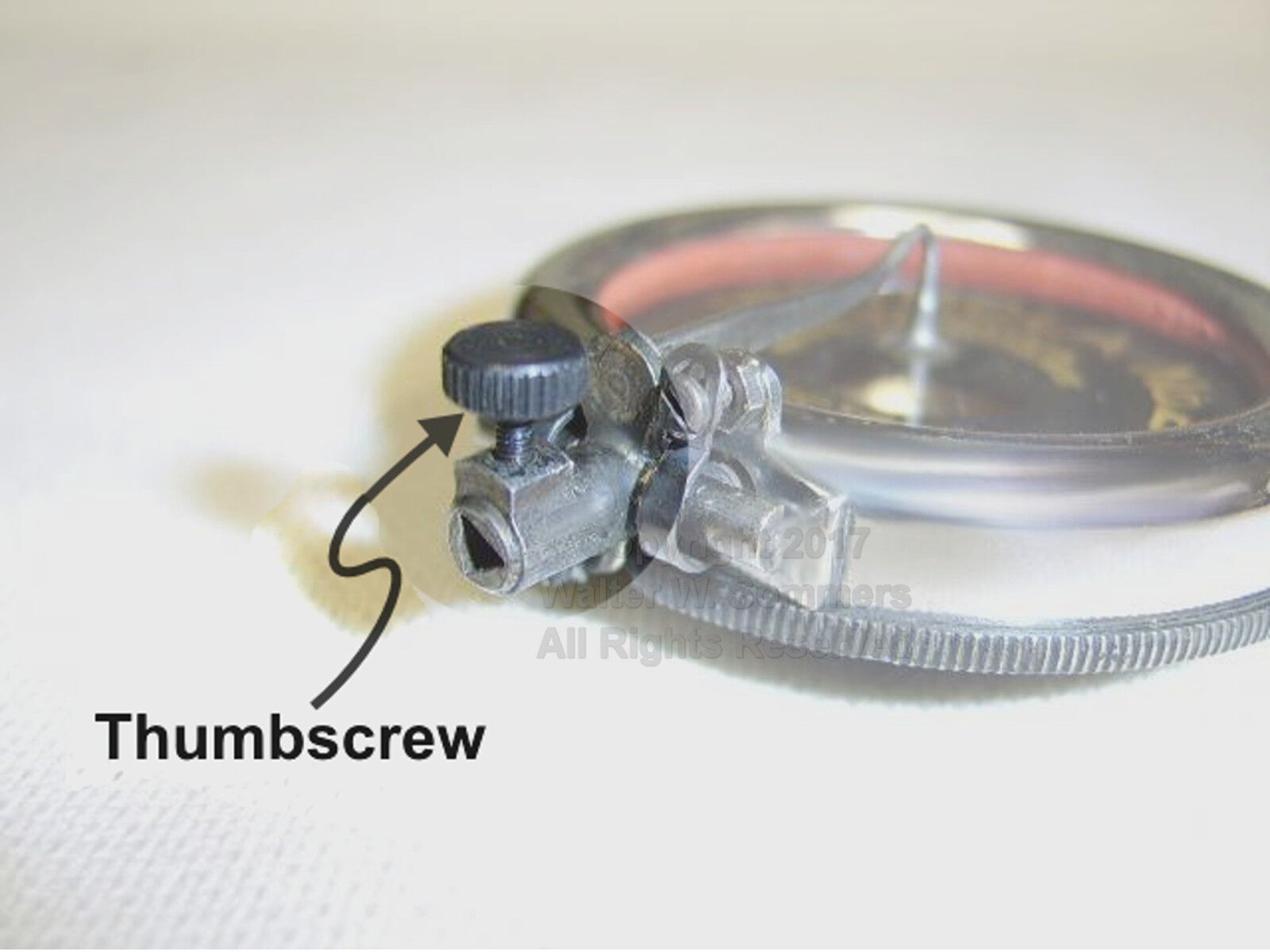-40%
Meltrope Sound Box~Reproducer Expertly Rebuilt Fantastic Sound EMG ~ Orthophonic
$ 224.4
- Description
- Size Guide
Description
Scarce Meltrope Sound Box ~ Reproducer ~ circa 1929British Made ~ Solid Brass Construction
Original EMG Style Aluminum Diaphragm
Accurately Restored - Superb Full Range Sound - Top Quality
Includes Isolators for smaller Victor/HMV pre-Orthophonic
and larger Orthophonic Era Tone Arms
You are purchasing a very scarce British Made Meltrope sound box/reproducer manufactured approximate 1929. Some folks refer to this as the Meltrope I but it is not actually designated as such. All of the work you see was performed by me, Walt Sommers, and my son, owners of Gettysburg Antique Phonographs. This reproducer was carefully and accurately restored and is in excellent overall condition as shown. Although designed for use on British Made Gramophones like EMG, I am including two additional tone arm isolators that can be easily removed or installed so that you may enjoy this reproducer on just about any Victor or HMV machine. If you are in doubt as to whether or not it will fit your application please feel free to let me know. I can make just about any size isolator with ease.
This is a solid brass reproducer and is in superb physical condition with only light superficial oxidation and a few superficial scratches. If you look closely at the pictures you will see light surface wear that is consistent with an original part of this age. The original EMG style aluminum diaphragm is in excellent condition as shown. New soft white silicone rubber tubular gaskets were installed to replace the original white gum rubber gaskets that had hardened from age. The original needle arm springs and bearings are in perfect condition and have been gently cleaned and reinstalled as shown in the pictures. The original red rubber isolator is present, albeit not as soft as it was originally. As previously noted I am including isolators for the common Victor'HMV pre Orthophonic and HMV/Orthophonic era tone arms. Folks familiar with the Meltrope and EMG designs probably know that the tone arm isolator is retained by a removable knurled compression nut. When installed on the tone arm the angle of the needle arm is set by the user and then the compression nut is tightened to secure the isolator and lock the tracking angle. Typical tracking angles for common Victor and Columbia lateral cut records usually range from about 60 to 65 degrees. The compression fitting allows you to choose that angle. Do so with care. Depending on the type of needle you use (i.e. such as a bamboo/fiber needle) you may find the angle to be much greater than 65 degrees approaching [not quite] perpendicular. The Meltrope is quite efficient and obviously designed with the idea of a fiber needle in mind but they do work well with steel needles. These reproducers are far more efficient than a common mica diaphragm.
We used a Victor Schoolhouse (VV-XXV) and a Credenza for our listening experience along with acoustic and electrically recorded records. We used a variety of instrumentals, choral, and spoken word recordings. I even listened to some big band. Our impression is that soft tone steel needles and bamboo (fiber) needles seem to produce the most pleasant and full sound with simply wonderful tonal quality. Of the two machines we preferred the oak horn of the VV-XXV over the Orthophonic. The XXV seems to be a better impedance match with its straighter and shorter tone arm and large pseudo exponentially tapered oak horn, whereas the folded Orthophonic horn seemed to stifle the sound and roll off at the high end just a bit. Folks who have experience listening to sound boxes like the Meltrope I, Meltrope III or a Ginn reproducer on an actual EMG machine understand this better than anyone. You MUST hear them to believe how good they are.
As we auditioned this Meltrope we selected good quality recordings in excellent condition and were careful to listen for such characteristics as sibilants in vocals, the distinct timbre of a decaying sine wave when a bell (struck once) is being played, and so on. These are characteristics that are not accurately reproduced with a mica diaphragm but are simply amazing using this Meltrope and it's EMG style aluminum diaphragm.
If you have good ears and enjoy nuance in sound, then we think that listening to this will be very enjoyable for you. Try it alongside your favorite mica reproducer or even an Orthophonic and I think you will be surprised by the efficiency of the Meltrope. I only wish I would have had a Meltrope III available for comparison. Maybe next time. Questions? Just ask.




















